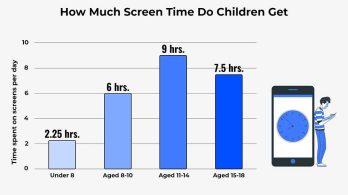If you’re a parent in Apple Valley struggling to get your child to bed on time—or stay asleep through the night—you’re not alone. Sleep issues are one of the most common concerns we hear from parents at our pediatric office. But the good news? A consistent, calming bedtime routine can dramatically improve your child’s sleep.
Here’s what the latest research and pediatric experience say about helping children sleep better — naturally and without stress.
🧠 Why Sleep Matters for Children
Sleep is critical for children’s physical growth, brain development, emotional regulation, and immune system health. Lack of quality sleep is linked to:
-
Mood swings and behavior problems
-
Difficulty focusing and learning in school
-
Weakened immune response
-
Obesity and metabolic issues
Recommended sleep hours per day (including naps):
-
Infants (4–12 months): 12–16 hours
-
Toddlers (1–2 years): 11–14 hours
-
Preschoolers (3–5 years): 10–13 hours
-
School-aged kids (6–12 years): 9–12 hours
-
Teens (13–18 years): 8–10 hours
🕒 Step-by-Step Bedtime Routine: What Works
Creating a predictable bedtime routine signals to your child’s brain and body that it’s time to wind down. Aim to keep the routine consistent, calming, and screen-free.
Here’s a pediatrician-recommended sequence:
1. Set a Consistent Bedtime
Pick a bedtime and stick to it — even on weekends. This helps regulate your child’s internal clock.
2. Wind Down the Environment
Dim the lights, turn off noisy toys or electronics, and create a peaceful atmosphere at least 30 minutes before bed.
3. Take a Warm Bath
A warm bath or shower relaxes muscles and helps lower the body’s temperature after, which encourages sleep.
4. Brush Teeth and Use the Bathroom
Make hygiene part of the routine so it’s never a battle.
5. Quiet Bonding Time
Read a story, sing lullabies, or talk about the best part of their day. This not only calms the brain but also strengthens your parent-child connection.
6. Bedtime Affirmation or Prayer (Optional)
A moment of reflection or gratitude can ease nighttime worries, especially for anxious children.
7. Lights Out
Use a nightlight if needed and keep noise to a minimum. White noise machines or soft lullaby music can help some children sleep better.
📱 Screen Time & Sleep: What to Know
Screens (TV, tablets, phones) emit blue light that suppresses melatonin — the hormone that helps you fall asleep. Pediatricians recommend:
-
No screens at least 1 hour before bedtime
-
Keep devices out of the bedroom at night
Instead, opt for reading, puzzles, or quiet crafts to wind down.
🌿 Natural Aids That Can Help
-
White noise machines: Block out background sounds.
-
Cool, dark room: Ideal temperature is 68–72°F.
-
Consistent wake time: Yes, even on weekends!
-
Lavender aromatherapy: Can promote relaxation in older kids (never use oils near babies).
Note: Always consult your pediatrician before trying melatonin or supplements.
🛏 Common Sleep Struggles & Solutions
• Bedtime Resistance
Give your child limited bedtime choices (“Do you want the red or blue pajamas?”) so they feel some control.
• Night Waking
Avoid rushing in unless your child is distressed. Encourage self-soothing.
• Early Rising
Use blackout curtains and a wake-up clock to train your child to stay in bed until an appropriate hour.
📍 Sleep-Friendly Living in Apple Valley
Take advantage of local opportunities that support healthy sleep:
-
Outdoor play in Apple Valley’s parks promotes better nighttime rest.
-
Less screen time with local activities like library visits or sports.
-
Access to pediatric care — we’re here to help you troubleshoot ongoing issues.
Good sleep doesn’t happen by accident — it’s built with consistent habits and loving boundaries. By establishing a predictable bedtime routine and creating a sleep-friendly environment, you’re setting your child up for better health, behavior, and happiness.
Still struggling with bedtime battles or nighttime wakeups?
Contact our pediatric clinic in Apple Valley for a personalized consultation. We’re here to help your whole family sleep easier.




